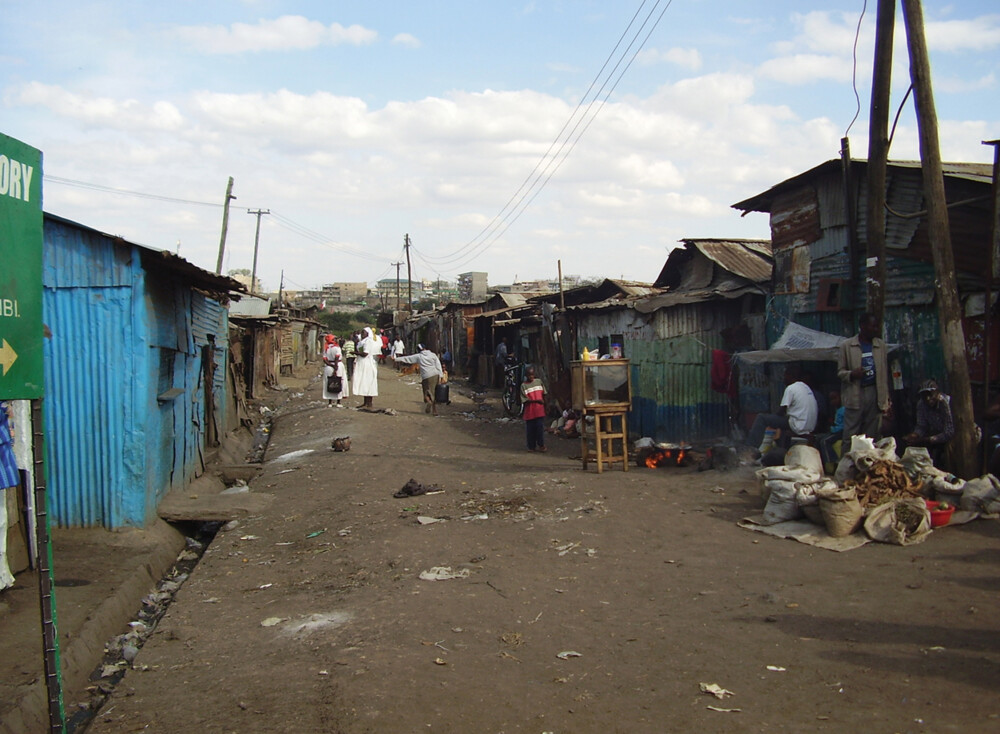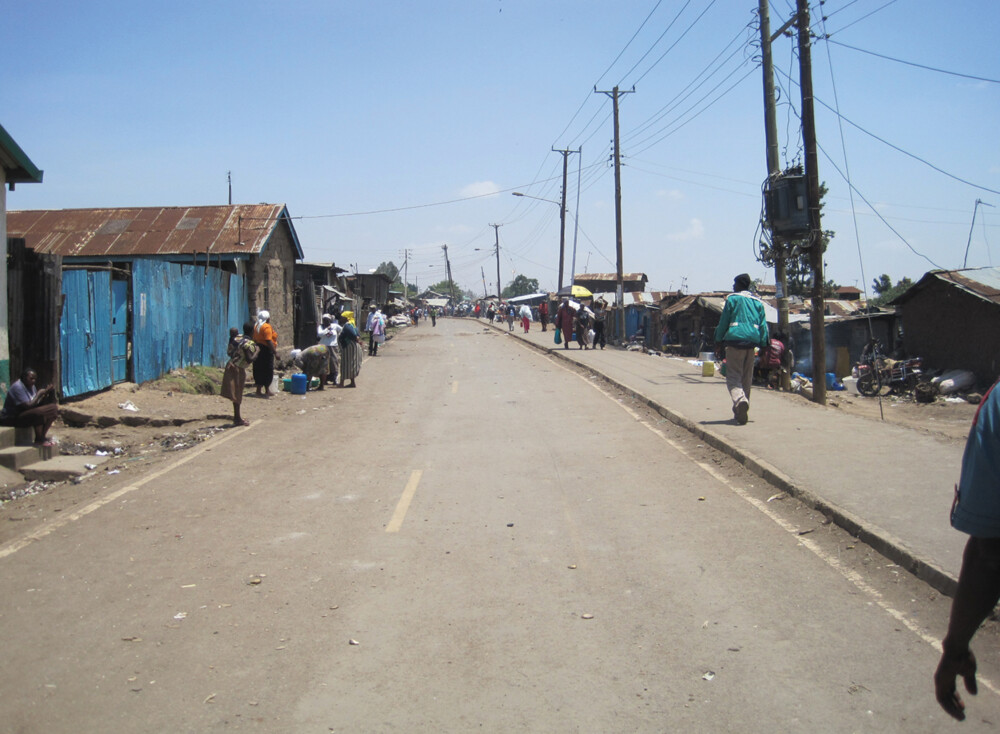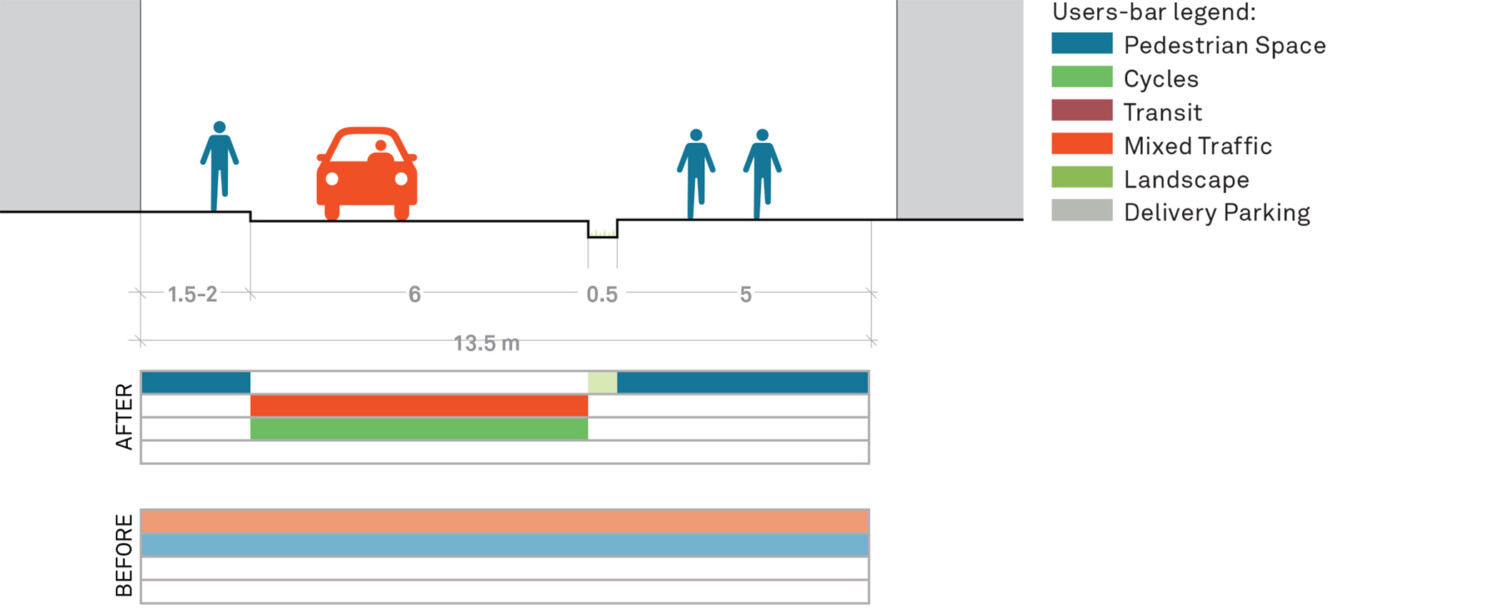-
About Streets
- Introduction
- Defining Streets
-
Shaping Streets
- The Process of Shaping Streets
- Aligning with City and Regional Agendas
- Involving the Right Stakeholders
- Setting a Project Vision
- Communication and Engagement
- Costs and Budgets
- Phasing and Interim Strategies
- Coordination and Project Management
- Implementation and Materials
- Management
- Maintenance
- Institutionalizing Change
- Measuring and Evaluating Streets
-
Street Design Guidance
- Designing Streets for Great Cities
- Designing Streets for Place
-
Designing Streets for People
- Utilities and Infrastructure
- Operational and Management Strategies
- Design Controls
-
Street Transformations
- Streets
-
Intersections
- Intersection Design Strategies
- Intersection Analysis
- Intersection Redesign
- Mini Roundabout
- Small Raised Intersection
- Neighborhood Gateway Intersection
- Intersection of Two-Way and One-Way Streets
- Major Intersection: Reclaiming the Corners
- Major Intersection: Squaring the Circle
- Major Intersection: Cycle Protection
- Complex Intersection: Adding Public Plazas
- Complex Intersection: Improving Traffic Circles
- Complex Intersection: Increasing Permeability
- Resources
Global Street Design Guide
-
About Streets
- Introduction
- Defining Streets
-
Shaping Streets
Back Shaping Streets
- The Process of Shaping Streets
- Aligning with City and Regional Agendas
- Involving the Right Stakeholders
- Setting a Project Vision
- Communication and Engagement
- Costs and Budgets
- Phasing and Interim Strategies
- Coordination and Project Management
- Implementation and Materials
- Management
- Maintenance
- Institutionalizing Change
-
Measuring and Evaluating Streets
Back Measuring and Evaluating Streets
-
Street Design Guidance
-
Designing Streets for Great Cities
Back Designing Streets for Great Cities
-
Designing Streets for Place
Back Designing Streets for Place
-
Designing Streets for People
Back Designing Streets for People
- Comparing Street Users
- A Variety of Street Users
-
Designing for Pedestrians
Back Designing for Pedestrians
- Designing for Cyclists
-
Designing for Transit Riders
Back Designing for Transit Riders
- Overview
- Transit Networks
- Transit Toolbox
-
Transit Facilities
Back Transit Facilities
-
Transit Stops
Back Transit Stops
-
Additional Guidance
Back Additional Guidance
-
Designing for Motorists
Back Designing for Motorists
-
Designing for Freight and Service Operators
Back Designing for Freight and Service Operators
-
Designing for People Doing Business
Back Designing for People Doing Business
-
Utilities and Infrastructure
Back Utilities and Infrastructure
- Utilities
-
Green Infrastructure and Stormwater Management
Back Green Infrastructure and Stormwater Management
-
Lighting and Technology
Back Lighting and Technology
-
Operational and Management Strategies
Back Operational and Management Strategies
- Design Controls
-
Street Transformations
-
Streets
Back Streets
- Street Design Strategies
- Street Typologies
-
Pedestrian-Priority Spaces
Back Pedestrian-Priority Spaces
-
Pedestrian-Only Streets
Back Pedestrian-Only Streets
-
Laneways and Alleys
Back Laneways and Alleys
- Parklets
-
Pedestrian Plazas
Back Pedestrian Plazas
-
Pedestrian-Only Streets
-
Shared Streets
Back Shared Streets
-
Commercial Shared Streets
Back Commercial Shared Streets
-
Residential Shared Streets
Back Residential Shared Streets
-
Commercial Shared Streets
-
Neighborhood Streets
Back Neighborhood Streets
-
Residential Streets
Back Residential Streets
-
Neighborhood Main Streets
Back Neighborhood Main Streets
-
Residential Streets
-
Avenues and Boulevards
Back Avenues and Boulevards
-
Central One-Way Streets
Back Central One-Way Streets
-
Central Two-Way Streets
Back Central Two-Way Streets
- Transit Streets
-
Large Streets with Transit
Back Large Streets with Transit
- Grand Streets
-
Central One-Way Streets
-
Special Conditions
Back Special Conditions
-
Elevated Structure Improvement
Back Elevated Structure Improvement
-
Elevated Structure Removal
Back Elevated Structure Removal
-
Streets to Streams
Back Streets to Streams
-
Temporary Street Closures
Back Temporary Street Closures
-
Post-Industrial Revitalization
Back Post-Industrial Revitalization
-
Waterfront and Parkside Streets
Back Waterfront and Parkside Streets
-
Historic Streets
Back Historic Streets
-
Elevated Structure Improvement
-
Streets in Informal Areas
Back Streets in Informal Areas
-
Intersections
Back Intersections
- Intersection Design Strategies
- Intersection Analysis
- Intersection Redesign
- Mini Roundabout
- Small Raised Intersection
- Neighborhood Gateway Intersection
- Intersection of Two-Way and One-Way Streets
- Major Intersection: Reclaiming the Corners
- Major Intersection: Squaring the Circle
- Major Intersection: Cycle Protection
- Complex Intersection: Adding Public Plazas
- Complex Intersection: Improving Traffic Circles
- Complex Intersection: Increasing Permeability
- Resources
- Guides & Publications
- Global Street Design Guide
- Streets
- Streets in Informal Areas
- Recommendations
- Case Study 3: Streets of Korogocho; Nairobi, Kenya
Case Study 3: Streets of Korogocho; Nairobi, Kenya

Location: Korogocho, Nairobi, Kenya
Population: 3.7 million
Area: 0.89 km
Right-of-Way: Various
Context: Residential (Informal Settlement)
Cost: 210 million KES (approx. 2 million USD)
Funding: Kenya-Italy Debt for Development Programme (KIDDP), Government of Italy through the Italian Development Cooperation, and the Government of Kenya
Overview
Korogocho is Nairobi’s fourth-largest informal settlement. Settlement began in the 1970s by quarry workers and first underwent redevelopment in 1987. Since then, the streets have been appropriated for various uses and have become narrower over time.
The Street Upgrading Project is part of a larger program called Korogocho Slum Upgrading Program (KSUP). To address the key issues of poor access roads, bad drainage, inadequate streetlights, and poor water and sewage systems, the KSUP planning process aimed to use integrated participatory planning steps as a resilient slum-upgrading method.
The project helped promote microeconomic activity, increase the number of jobs, and improve the perception of safety. The redesigned streets provided a greater number of public meeting places and improved connectivity to the larger urban fabric.


Goals
- Establish residents’ confidence in the upgrading program.
- Improve physical, economic, and social living conditions through participatory planning and management.
- Increase microeconomic activity, safety and security, and mobility for residents.
- Invoke a sense of pride among the residents.
- Facilitate planning and security of tenure provision.
- Develop security through increased business opportunities and street lighting.
Key Elements
Streets were prioritized on the basis that they ensured circulation in all eight villages.
Reclaimed public space, reverting street widths back to those established in the 1987 upgrading.
New connections to surrounding urban fabric.
Increased access and basic services (drainage, water, sewerage, and street lighting).
Lessons Learned
The level of participation highly affects residents’ attachment to the streets. Communication is crucial to raise awareness of the changes carried out by the project.
Engage with the residents in the upgrading process to ensure social sustainability in these areas.
The safety of a street has many dimensions. Design streets to accommodate all users and discourage criminal activities.
Create streets to accommodate all modes of transportation.
Maintain the street’s role as a vibrant public meeting space.
Design streets to be flexible and satisfy various community needs. Provide temporary structures as well as permanent ones.
Consider waste management, cleaning, and repairing of the streets in slum settlements.
Involvement
Public Agencies
Ministries of Local Government, Housing, Lands and Finance; City, County, and Province of Nairobi; Italian Government
Citizen Associations and Nonprofits
Korogocho Residents Committee, UN Habitat, Comboni missionaries
Designers and Engineers
The Nairobi City Council and the Ministry of Local Government
Evaluation

Residents reported:
- An increase in new activities
- An increase in pedestrian volumes
- An increased number of vendors and business activities
- An increase in the perception of safety

Project Timeline

Adapted by Global Street Design Guide published by Island Press.